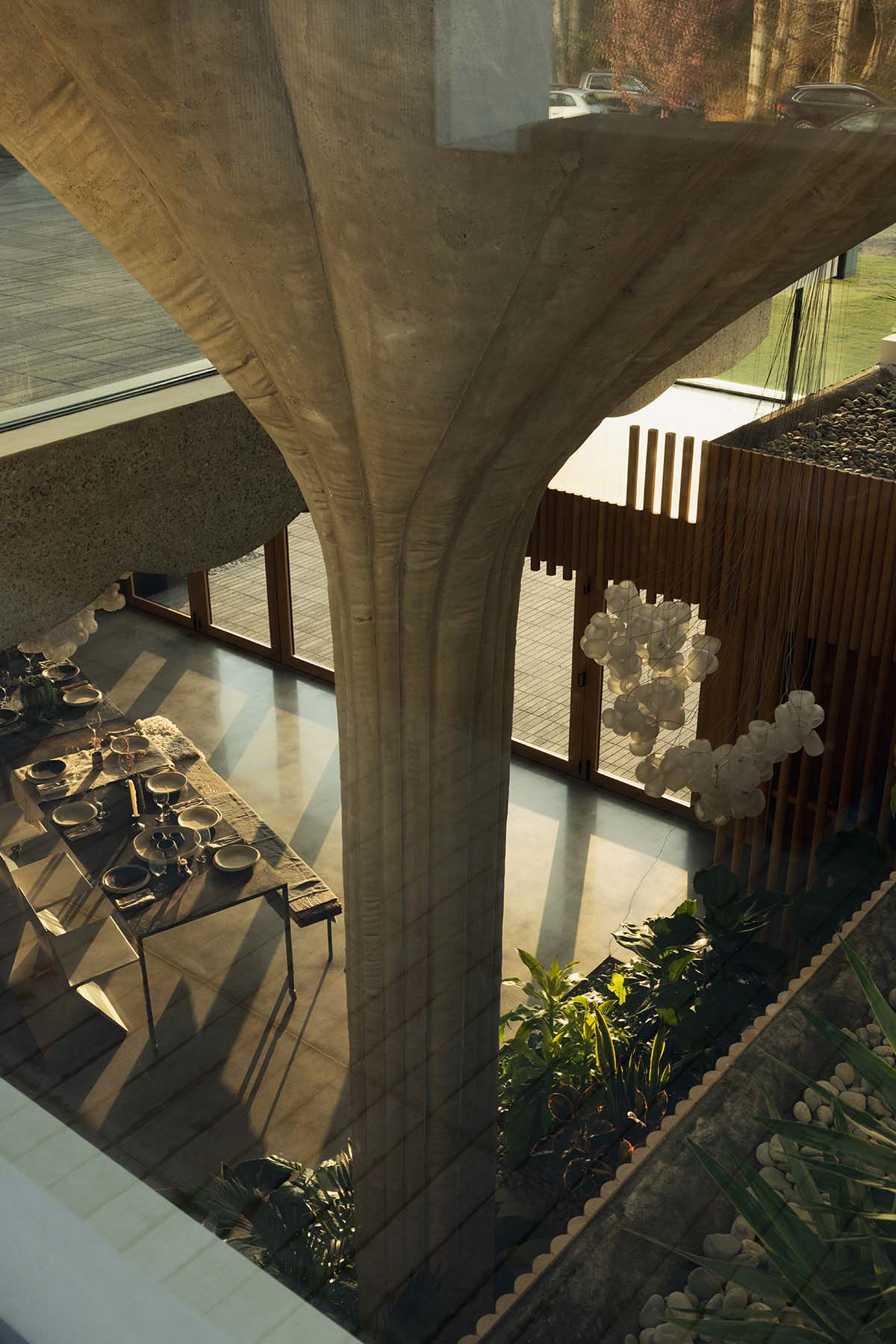Submitted by WA Contents
Omer Arbel shapes family home around monumental lily pad columns on a hayfield in Canada
Canada Architecture News - Dec 28, 2023 - 10:26 2625 views

Vancouver-based designer Omer Arbel has shaped a family home around monumental lily pad columns on a hayfield in the Canadian Pacific Northwest.
Named 75.9, the home, located on a vast acreage in the countryside south of Vancouver, Canada, has tested the first method of concrete pouring into fabric - which was invented by the studio.
With its impressive columns made of concrete poured into fabric, this house shows that Arbel applied his process-based design approach on an architectural scale for the first time.

During the design process, Omer Arbel started devising a method of pouring concrete into a fabric stretched out between lightweight plywood ribs arranged radially.

Only after the first column was poured on site, according to him, it was a successful first experiment. At a later stage the client agreed to let Omer Arbel design the rest of the home around it.

The holistic view of the house gives the impression that the living modules are hidden under a floating carpet by lifting the landscape from the ground.
Arbel treated the fabric-formed columns as if they were found archeological ruins in the landscape, and he envisioned the house as a contemporary construction built around and among them.

The living spaces are separated into four double-height volumes, built in glass and cedar wood. On the roof grow magnolia trees, planted in the hollow tops of the columns.

"A cinematographic narrative of domestic habitation"
"The surrounding hay field has been lifted like a carpet to cover the house’s connecting passages, allowing the architecture to merge with the landscape as if it were a natural extension of it," said Omer Arbel.
The interior of the 75.9 house is much more interested than expected. Interiors have different height and position for each column, whcih "creates a cinematographic narrative of domestic habitation."

The double-height living room, dining space, and open-plan kitchen are all under the canopy of one column. Its rough finish stands in contrast with the polished floors – also concrete – and complemented by warm timber fixtures and furniture, as well as a lush, Japan-inspired indoor garden.
Throughout, spaces are illuminated with pendants from Bocci, the Vancouver and Berlin-based lighting company co-founded by Arbel.

"For 15 years, we’ve developed a method of working with materials at the scale of an object," said Omer Arbel.
"This is the first project where we’ve had the opportunity of trying that same methodology at the scale of architecture."
"Our approach has been to design methods of making concrete artifacts and treating them as if they were found form, as if they were archaeological ruins," he continued.
"To divide the decision-making into two different phases, one focused on creating specific objects, and the other separate, much later, focussed on weaving them into domestic space," Arbel continued.

"We’re increasingly coming to a time in human history where anything that can be imagined can be built. In that world, it becomes increasingly important to question what is worthwhile," he added.
"For me, the answer goes back to the analogue approach to materiality. We try to release control instead of gaining increased levels of more and more control. We try to set these systems in motion which let the material determine the form it takes," Arbel continued.

The 75.9 house is the result of Arbel's more than a decade of experiments with the material. The house has also been described as the most ambitious experiment to date in Arbel's process-based approach.
He said that "by considering an ancient construction material anew, the house is at once a highly contemporary domestic landscape and a timeless monument with an archaeological scope."



























Based in Vancouver, Omer Arbel cultivates a fluid position between the fields of architecture, sculpture, invention, and design.
His works focuse on the investigation of intrinsic mechanical, physical, and chemical qualities of materials and exploration of light as a medium.
All images © Fahim Kassam.
All drawings © Omer Arbel.
> via Omer Arbel
